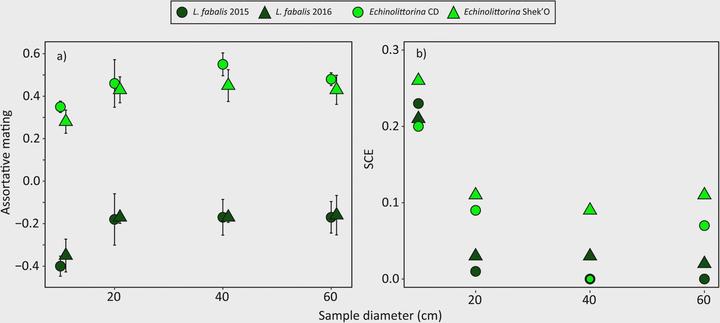
Abstract
Mate choice is a key life history trait and has been widely examined across animal taxa, yet the spatial scale at which animals exercise this choice has rarely been examined. Here we propose a novel method to estimate the spatial scale of mate choice in situ based on a recently developed experimental approach to evaluate, in an unbiased fashion, assortative mating in the wild as a proxy to mate choice. Using mating pairs and the surrounding individuals which were not mating at a particular scale (distance from the mating pair), we correct assortative mating for the known scale-of-choice effect bias due to microgeographical heterogeneity. Appling a linear regression of assortative mating for different scales of correction allows the identification of changes in the scale of choice. In both species, the maximum mate choice │0.35│ occurs at the mating pair position and decreases about 0.35% per cm, which was likely due to the fact that gastropods are slow-moving organisms with limited visual ability, and their mate-searching strategy relies heavily on chemical cues which function over a short distance. The proposed new method can be used to compare species with both positive and negative assortative mating and with mate choice on different traits (e.g. size or colour). As such, we believe that this novel method can be applied to assess the scale of mate choice in other organisms due to the prevalence of assortative mating in the animal kingdom.